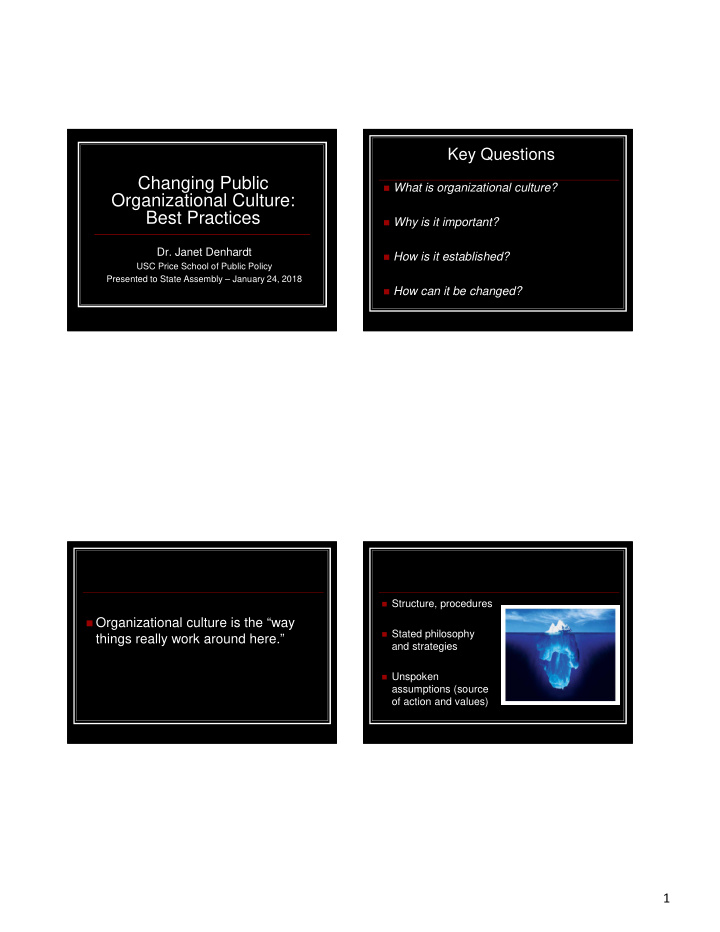



Key Questions Changing Public � What is organizational culture? Organizational Culture: Best Practices � Why is it important? Dr. Janet Denhardt � How is it established? USC Price School of Public Policy Presented to State Assembly – January 24, 2018 � How can it be changed? � Structure, procedures � Organizational culture is the “way � Stated philosophy things really work around here.” and strategies � Unspoken assumptions (source of action and values) 1
Why is culture important? � All change occurs within a cultural Culture eats strategy for context breakfast… � Culture guides and controls behavior and policy for lunch � In the public sector: higher standards and multiple accountabilities Organizations with How is Culture Established? cultures based on: � Slowly: Culture is established gradually over time � Respect Are more � Collectively: Largely informal, unspoken agreements effective, and assumptions of all members of the organization � Inclusion resilient, and � Based on learning: Experiences of group members as productive organization evolves � Trust/Safety � In response to external forces: Beliefs, values, and assumptions brought in from outside 2
How do People Learn Culture? How Leaders Change Culture � BEST PRACTICES � Socialization � Talk about the desired values regularly � Stories � React carefully to critical incidents and crises � Symbols � Model behavior � Reward and highlight desired behavior � Jargon and language � Share successes and tell stories � Statements of principle Why is There Always How Leaders Change Culture Resistance to Cultural Change? � OTHER ACTIONS � Loss of what “is” � Formal statements of policy � Uncertainty about how to � Training succeed � Organizational structure � Past experiences � Processes and procedures 3
Approach Outcome Managing Resistance Dealing with Resistance Education and communication Most likely to result in commitment to change � Positive cultural norms are the most effective Participation and involvement Facilitation and support � Negative cultural norms are less effective and cause more Organizational and structural Can make a difference based on resistance changes intentions and follow-through � Consistent and persistent reinforcement of values Rules May yield compliance but not commitment Control/Enforcement � Culture is collective, the more inclusion the better Key Questions for Leadership � What are the constructive cultural norms you want to foster? � What is the greatest source of cultural resistance to change? 4
Recommend
More recommend